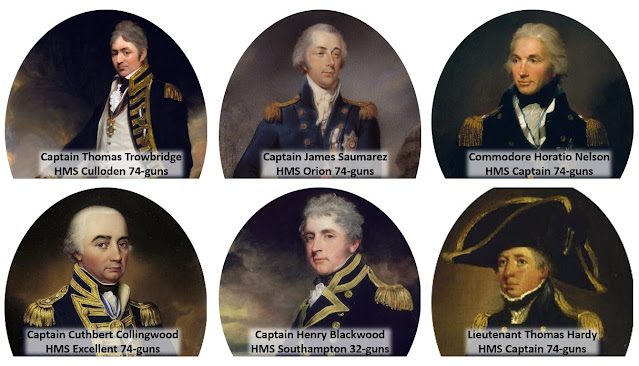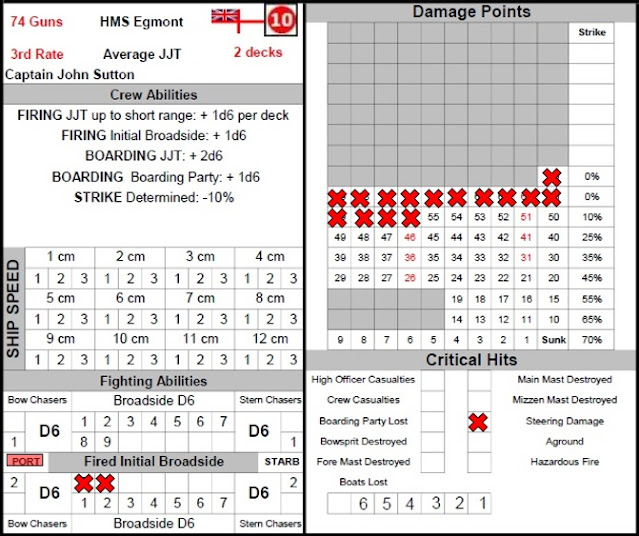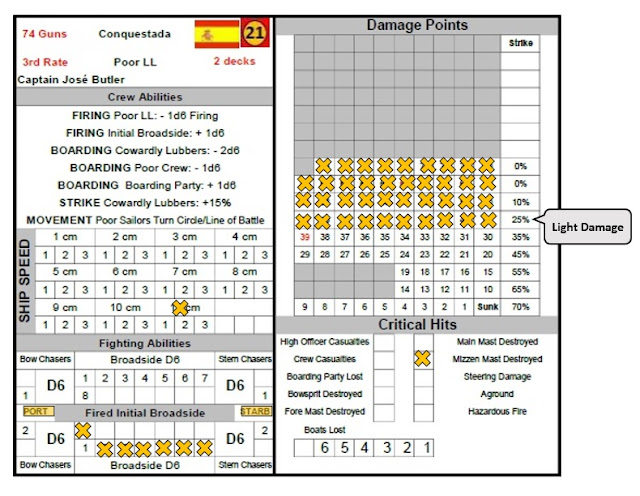So its been a while since I updated everyone on my Vassal gaming, with my last post optimistically entitled 'Part One' looking at Steve M's and my game of Napoleon at Leipzig game from OSG, which were just getting into back in September last year, see link below.
Well lots of other stuff imposed itself on the blog content between then and now and it's only now that I've found time to sit down and review that particular game and a few others that have been played since and thought I might just do a round up of those games to get things back up to date.
So the Leipzig game proved great fun, but I'm afraid I failed to live up to the performance of the Emperor of the French, managing in my machinations of the card play to promote the Russian and Prussian Guard into the front rank of the Allied attacks south of the city after I had delayed the arrival of less able Allied troops tabled to arrive before them - doh!
The card play in the Napoleonic Battles Library Series can be a two edged sword and a cunning plan can sometimes come back to bite you!
 |
| Our Leipzig game at the close of play on the 16th October. |
This proved a costly error as my Marie Louise's struggled to hold these elite troops in place as I was forced to rush Young Guard and eventually the 'Grumbler's' themselves to try and stem things.
 |
| Marshal Ney, managed a fine job imposing himself on Blucher, but all to no avail as things fell apart in the south. |
In the end I was forced to capitulate at the end of the 16th October, as Steve not only forced my position in and around Connewitz with a well executed attack by Kleist and the the Prussian Guard, but also made sure the French were not going to get out of town any time soon as he bottled up my escape route by closing the causeway through Lindenau.
 |
| The key area around the south of Leipzig that cooked Napoleon's goose! This despite a masterful defence in the north by Ney giving the old warhorse Blucher a bit of a bloody nose |
My centre in the south was well and truly busted with two corps demoralised after the heavy fighting in the previous two days, and the final attack on Connewitz capitalised on the hard fighting put in by the Allies during a day and a half of persistent rain that negated their superiority in artillery and forced them to take ground at the point of the bayonet.
Well played Steve and an enjoyable game that we played through the best part of September and October and were joined in our 'game room' on a couple of our nights play by the design team that created the latest version of this classic game, which was fun sharing comments over the Vassal platform during play and having a few of our errors corrected, thanks chaps.
At about the same time as I was enjoying Leipzig on a Tuesday night, I was playing Sovereign of the Seas (SOTS) with Jason on a Thursday afternoon which we concluded at about the same time and I reviewed my thoughts about the game in my post looking at its wider potential for use as a table-top campaign engine, see the link above to that post.
 |
| One of our climactic battles in 1799 was the Battle of Aden, here showing the result at the end of the affair with the British triumphant. Note 'sunk' is just a game mechanic to indicate captured, taken or sometimes destroyed, with most defeated vessels being returned to the draw pot to return in future turns. |
During our final rounds of play we did find a slight problem with the game and its spotting rules when fleets go looking for each other, in that part of the spotting calculations adds the number of ships in each opposing fleet to the Admiral's value, any friendly frigates nearby and either three or one die scores depending on if you are wanting to spot (1 x d6) or avoiding a contact (3 x d6). This works ok until the European player, often trying to avoid a contact, builds very large fleets that appear to negate most British attempts to find them even with Nelson on a rating of 4, especially when sitting on a lead in VPs and trying to see the campaign out.
We think we may have a fix for that problem, which I'll address at the end of the post, but decided to turn our attention to another naval war offering for the Age of Sail, namely 1805 Sea of Glory designed by Phil Fry and published by GMT.
I bought this game soon after it was published and it is a work of passion by Phil Fry and one I have been keen to play using the full campaign set up for the dramatic year of 1805, which Jason and I started just before Xmas.
 |
| Yet to be resolved, but it's June 1805 and the Channel Squadron have intercepted a lone French 74, that escaped from Rochefort into the Bay of Biscay, with the ships deployed on the battle-board (centre right). The Mediterranean is full of British ships (frigates and squadron markers above the Balearic Islands, with another patrolling the Gibraltar Straits, that followed in the wake the French Brest squadron, after it successfully raided Alexandria and escaped into Cartagena. |
The cat and mouse game that is produces is a classic war at sea campaign with Jason, playing the allies
looking for the opportunity to move his squadrons to sea at the best opportunity when British blockaders have been blown off station, and with his admiralty orders predefining the destination and objectives of his squadrons.
For myself, running the British, the first months of this game have been all about manning and repairing as many ships as I can each month, finding out what Nelson meant about not having enough frigates, and trying to get into the head of the enemy and accurately assess where certain enemy units may be heading amid a flurry of dummy blocks designed to draw my hunting squadrons of the scent. Great Stuff!
 |
| The state of the British fleet at the end of May I 1805 with storm damaged ships, Bellerophon and Atlas, awaiting repair in Plymouth and the damaged Repulse still at sea with the Atlantic Squadron. To the far top right, quite a few ships still sit in ordinary in Plymouth and Portsmouth, awaiting fitting out and new crews brought in by the Press. |
We are now into June 1805 and the first six months of play have generated French raids on Antigua and Alexandria and have seen three interceptions by the British with the Brest fleet escaping battle in the first but seeing two smaller squadrons intercepted, the first thoroughly beaten and the next, consising of just one French 74 about to be taken by the Channel squadron on patrol in the Bay of Biscay.
This is a great game and the administration side of running the fleets, dealing with damaged ships, appointing commanders to various squadrons, rotating in new ships brought out of ordinary, as well as trying to deal with the enemy is all here in this game and we are having a lot of fun with it.
With Leipzig concluded Steve and I decided to have a complete change of theme and returned to the Western Desert, this time in 1941 to play Operation Battleaxe, Wavell v Rommel, from Revolution Games, using the area system of WWII games started by Avalon Hill with Breakout Normandy (BKN), a game we know well and love playing.
 |
| The game set up with the Empire forces yet to deploy onto the frontier, and with the Axis around and forward of Tobruk |
This game has lots of similarities to BKN, but some key differences that sees a battle solution much more decisive and punishing than the often attritional battles modelled for the Normandy campaign, with the fighting often taking place in close dense terrain rather than the wide open vistas on the Western Desert.
 |
| June 16th Impulse Four: The Empire forces have pushed forward and grabbed key terrain on the frontier releasing Axis armour to come forward to deal with them. |
This interesting game is one of two halves, seeing the Empire force launch its surprise offensive as the Axis focus on strangling the Tobruk defenders, only to see the taking of key victory point (VP) areas releasing the Axis armour to counterattack.
Thus the Empire commander has to decide when the point is reached to defend that terrain they hold and go firm in the face of Axis attacks to retake them, with both sides cautiously watching that their combats do not result in dangerous gaps that could allow a rapid penetration to yet more victory point areas lost.
The VP areas keep on giving once taken and thus the Axis must stop the bleed of VPs to the Empire from territory grabbed in previous turns.
 |
| The end of our first game and the Axis are defeated and forced to pull back from Tobruk losing key armoured assets in battles around Fort Capuzzo and Sidi Omar. |
The game proved very entertaining and in two play throughs reached a climax by the second day of the offensive as the Axis were stung into a response as the Italians on the frontier recoiled or were destroyed in the face of British tank assaults.
However we both felt that the German panzer forces together with their anti-tank capability did not seem to be adequately reflected in the game, with poor British tank tactics, displayed by Churchill's Tiger Cubs charging massed lines of dug in 88mm and Pak 38 At guns, seemingly not captured in the combat resolution which we both struggled to match with our reading and understanding of this battle from the history books.
That said this is a nice rendition of this interesting early war desert campaign, with great graphics and other nice touches modelling this theme and made a nice change from Crusader and later offensives.
With Operation Battleaxe concluded in January, Steve and I turned to another interesting offering from Revolution Games, Pacific Fury, Guadalcanal 1942, another area based game but with an entirely different theme, focussed on the naval and land struggle between Japanese and American forces to take and hold the strategically important island of Guadalcanal in the Solomon's campaign of 1942.
 |
| The map set up for the start of Pacific Fury Guadalcanal, with both fleets ready to be deployed onto their respective operations tracks, seven boxes to be played through each of four months August to November. Henderson Field is in American hands on the Initiative Track, and the Japanese player builds task forces first, then the American player, who then deploys (sorties) onto the map first. |
This game along with 1805 Sea of Glory are perhaps my favourite choices played so far since my last Vassal update and very cleverly recreates some of the issues the respective naval commanders of both sides faced in the decisions around force deployments in and around Guadalcanal in support of land units struggling to gain ascendancy and control of its vital airfield.
This game is all about anticipating what your opponent is likely to do and to try and outwit his deployments, called sorties, with those forces of your own, hence task force construction using the aircraft carriers, battleships and cruisers of the respective fleets, placed in the right order on the Operations Boxes that decides the order task forces can 'sortie onto the map is vital.
 |
| Game one, turn three, October, with the Japanese controlling Henderson, which has suffered a bombardment or air strike (indicated by a red X) and seeing the Americans needing to land troops with two transports to shift the marker two spots in their favour at the close. Oh and should a transport get sunk in the effort that shifts the marker back one in favour of the Japanese - Great Fun! Note TFA US transports escorted by heaps of battleships and cruisers on the Operation Boxes, coming on next, set to come on last, hopefully once the Enterprise Task Force Carrier in the South Pacific Ocean has dealt with the opposition to allow an unopposed landing. Note also a Japanese TFC coming on last foreboding a carrier battle at the close. Normally during game play these opposing deployments are hidden from the opposition but shown here for illustrating game play. |
Task Forces come in three flavours, Task Force Carrier (TFC must include a carrier either Fleet or Light), Task Force Bombardment (can only be composed of battleships and cruisers), Task Force Assault (TFA must include one or two transports and potentially battleships and cruisers). In addition the Japanese player has a special TFA, the Tokyo Express representing their fast destroyers able to move into Ironbottom Sound and land troops at night and departing before daylight.
TFC's can only operate in the open seas of the South Pacific Ocean and Eastern Solomon's, conducting carrier battles with enemy TFC's in their sea area and launching airstrikes against opposing groups in adjacent areas including Henderson and TFB's and TFA's they can catch in and around Ironbottom Sound. The slot is immune to such attacks and allows the Japanese a secure deployment zone from them.
Only TFB's and TFA's can enter Ironbottom Sound and The Slot, either fighting opposition task forces, bombarding Henderson and or landing troops. If at the end of a two tur combat resolution one side or the other occupies Ironbottom Sound and the force has transports, they immediately land before the force withdraws to its respective base at either Truk or Espiritu Santo.
 |
| End of November, Game One and an American Victory having fought back in October to take Henderson and hold it with two TFB's in Ironbottom Sound supported by the Hornet TFC a Japanese TFB and TFA held a bay in the slot. |
The latter operation is key to winning the game as troop landings enable the initiative marker and control of Henderson to be moved in either direction according to who landed the troops, which will always be the player who does not have control at the time and with that aspect of the game likely to change should control shift, say from the Americans to the Japanese.
Thus the other naval deployments are all about keeping or taking control of the Henderson marker, with ship losses nothing to do with victory, if the marker should lie in the control of either player at the conclusion of the November turn.
Some folks seem to struggle with that concept, but I rather think it reflects very well the position of both sides, to come out on top in this defining campaign, pretty well no matter what the cost in ships and men, with the result of this campaign shaping the direction of the Pacific War, with large numbers of major ships lost by both in the actual fighting, which would see fleet and light carriers, battleships and numerous cruisers written off the orders of battle for both sides.
Finally Jason and I are going to start another Sovereign of the Seas game this time trying out the idea I presented in my post back in August last year to use the game as a table-top campaign battle engine, using the 1:700th collection of model ships to resolve the combats we generate in our game and translating the results back into it.
Having played the game as a straight board game we have a pretty good idea as to what it will generate in terms of engagements and the addition of bringing in players from club to fight out those engagements and then translate them back into the SOTS will, I think, make for an interesting campaign system.
In that vain I have composed some simple tweaks to facilitate such play that also sees the use of the 1805 spotting rules adapted to our SOTS game as well as the use of Kiss Me Hardy to resolve the action.
We now have a date in the diary at the end of this month to start things off in 1793 with the commencement of the French Revolutionary War and we will play the board game on Vassal with a Zoom link and an invitation to players in the club interested in playing the table-top actions to join us if they would like to follow the play, which will generate our first battles of the war.
Needless to say I will update the blog here and on the Devon Wargames Group as to our progress.
More anon
JJ



































































